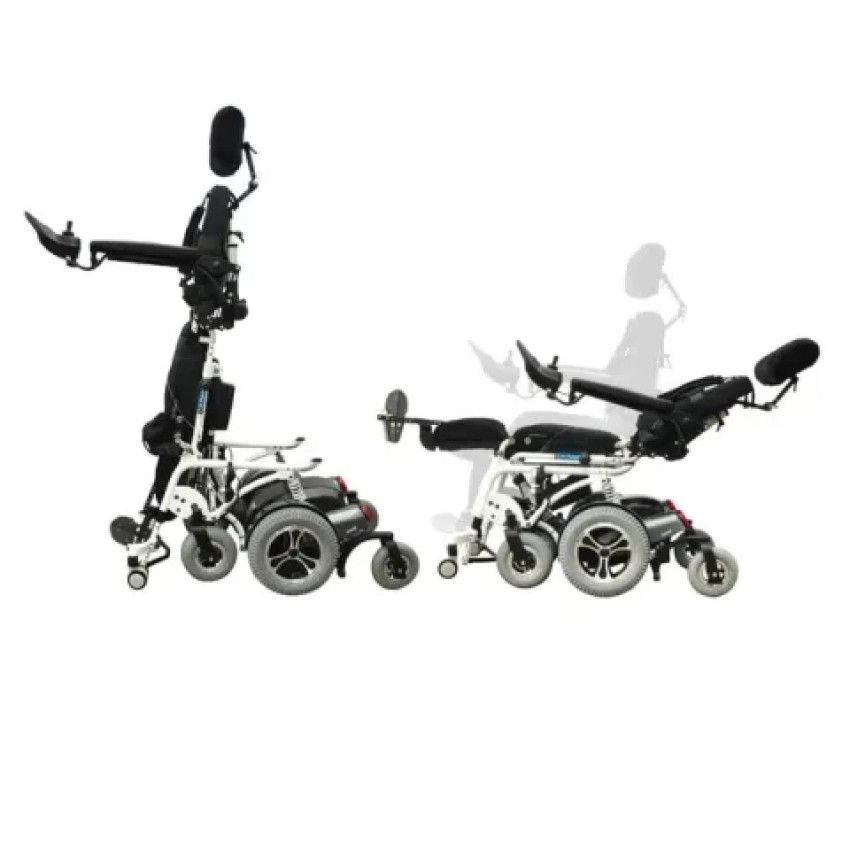
Standing wheelchairs have revolutionized mobility for individuals with disabilities, providing not only the ability to move around but also the invaluable benefit of standing upright. These innovative devices offer numerous advantages, including improved circulation, pressure relief, enhanced social interaction, and greater independence. However, selecting the right standing wheelchair requires careful consideration of various factors to ensure it meets the user's specific needs and preferences.
In this comprehensive guide, we'll explore the key factors to keep in mind when choosing a standing wheelchair.
1. Medical Considerations:
Before diving into the specifics of different standing wheelchair models, it's crucial to consult with a healthcare professional, preferably a physiatrist or rehabilitation specialist, to assess the user's medical condition and mobility requirements. Considerations such as muscle tone, range of motion, balance, and overall health status will influence the choice of a suitable standing wheelchair.
2. Functional Requirements:
Every individual has unique functional requirements based on their lifestyle, daily activities, and environment. Consider factors such as:
· Weight Capacity: Ensure the standing wheelchair can support the user's weight comfortably.
· Mobility Needs: Determine whether the user requires manual propulsion or prefers powered mobility options.
· Terrain Accessibility: Consider where the wheelchair will primarily be used – indoors, outdoors, or both – and choose a model with appropriate features for navigating different terrains.
· Seating Options: Assess the user's seating preferences, including cushioning, backrest support, and adjustability for comfort and postural alignment.
· Standing Mechanism: Evaluate the standing mechanism's ease of use, stability, and range of motion to ensure it meets the user's functional requirements.
3. Customization Options:
Personalization plays a crucial role in optimizing the user's comfort, functionality, and overall satisfaction with the standing wheelchair. Look for customization options such as:
· Adjustable Seat Heights: Opt for a standing wheelchair with customizable seat heights to accommodate various activities and preferences.
· Modular Design: Choose a wheelchair with modular components that can be adjusted or replaced to accommodate changes in the user's needs or preferences over time.
· Accessories and Add-Ons: Consider additional features such as trays, cup holders, and storage bags to enhance convenience and functionality.
4. Safety Features:
Safety is paramount when selecting a standing wheelchair, especially considering the elevated position and potential risks associated with standing mobility. Pay attention to the following safety features:
· Stability: Ensure the wheelchair provides sufficient stability in both sitting and standing positions to prevent tipping or falls.
· Secure Locking Mechanism: Verify that the standing mechanism includes a reliable locking mechanism to prevent unintended movement or collapse.
· Fall Prevention: Look for features such as harnesses, straps, or armrests with integrated brakes to minimize the risk of falls while standing.
· Emergency Controls: Check for emergency release mechanisms or controls that allow the user to return to a seated position quickly in case of discomfort or instability.
5. Durability and Maintenance:
Investing in a durable and low-maintenance standing wheelchair is essential for long-term reliability and cost-effectiveness. Consider the following factors:
· Quality Materials: Choose a wheelchair constructed from high-quality materials that can withstand daily use and exposure to various environmental conditions.
· Ease of Cleaning: Opt for a wheelchair with smooth surfaces and removable components for easy cleaning and maintenance.
· Warranty and Service Support: Select a wheelchair from a reputable manufacturer that offers comprehensive warranty coverage and reliable customer support for repairs and servicing.
6. Budget Considerations:
While the cost of a standing wheelchair is an important factor, it's essential to prioritize functionality, safety, and suitability for the user's needs over price alone. Consider the long-term value and benefits of investing in a high-quality standing wheelchair that enhances mobility, independence, and quality of life.
Conclusion:
Choosing the right standing wheelchair requires careful consideration of medical, functional, safety, customization, durability, and budgetary factors. By consulting with healthcare professionals, evaluating individual needs, and exploring available options, individuals with disabilities can select a standing wheelchair that meets their unique requirements and empowers them to live active, independent lifestyles. Remember, the ultimate goal is to improve mobility, enhance comfort, and promote overall well-being for the user.


